Create Personalized Ads at Scale
Automatically create banner and video content for different products, categories, and offers to be relevant for different cohorts on multiple channels.
Book a Demo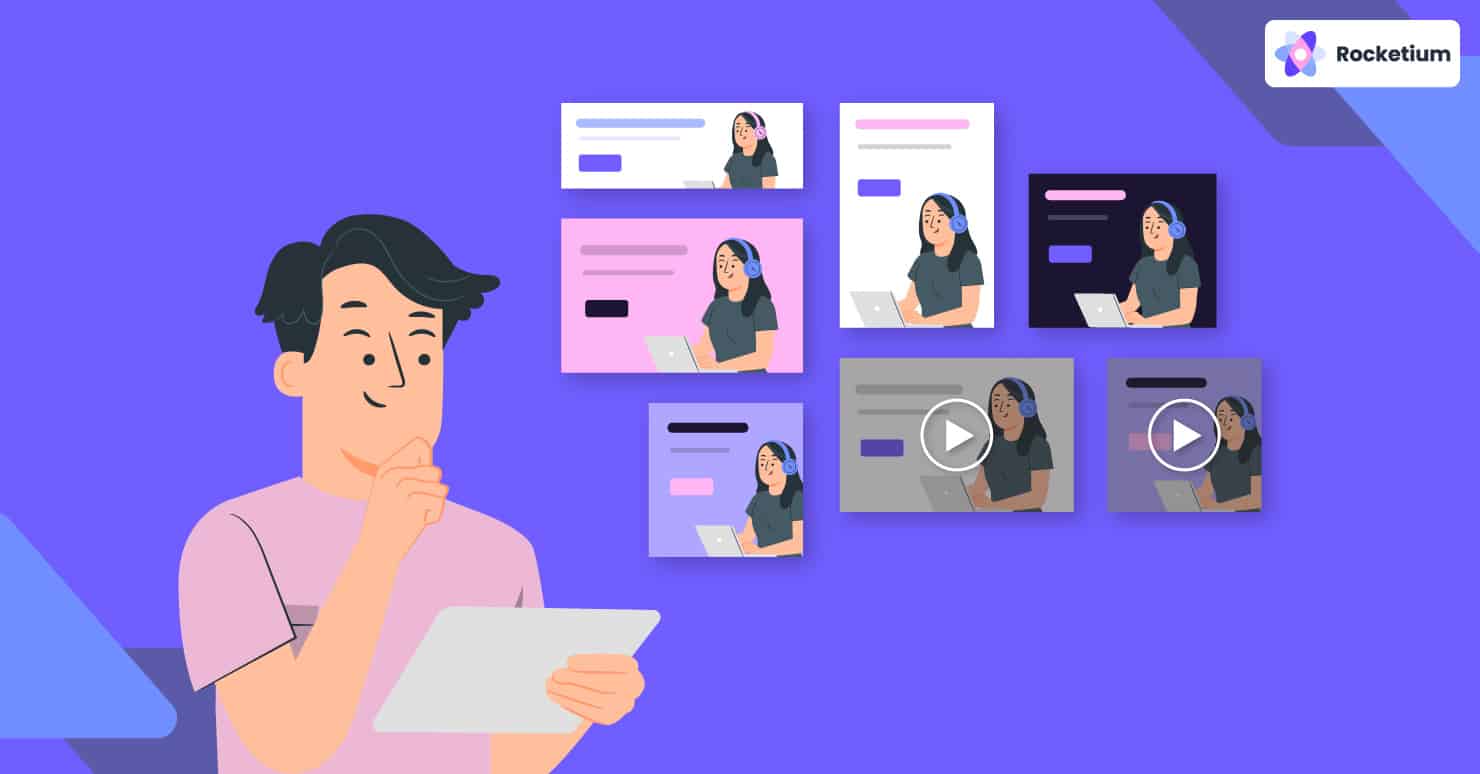
Automatically create banner and video content for different products, categories, and offers to be relevant for different cohorts on multiple channels.
Book a Demo
Growth marketers have long realized that the fastest way to a customer’s wallet is through personalized messaging delivered via interactive media i.e., via personalized banner and video ads. For example, with the phenomenal growth of video, they have been quick to integrate personalized video ads into their campaign strategies.
It is perhaps the only way to beat banner fatigue – the single biggest factor that impacts campaign ROI. The truth is that marketers have access to tons of customer data to create hyper-personalized digital ads. What they lack is the capacity to execute it.
The inability to scale digital ad campaigns is an almost universal problem faced by marketers. If you scratch beneath the surface, you’ll find a number of common patterns.
According to a survey by Adobe, 33% of respondents ranked ‘time to create’ as the top challenge in personalizing banner and video ads. The study showed that it took 27 hours on average for marketing and design teams to develop just one piece of content.
Add to that the time spent creating variations for different cohorts and channels and the average turnaround time goes up to a whopping 12 days. Needless to say, all of this adds to the cost of creative production.
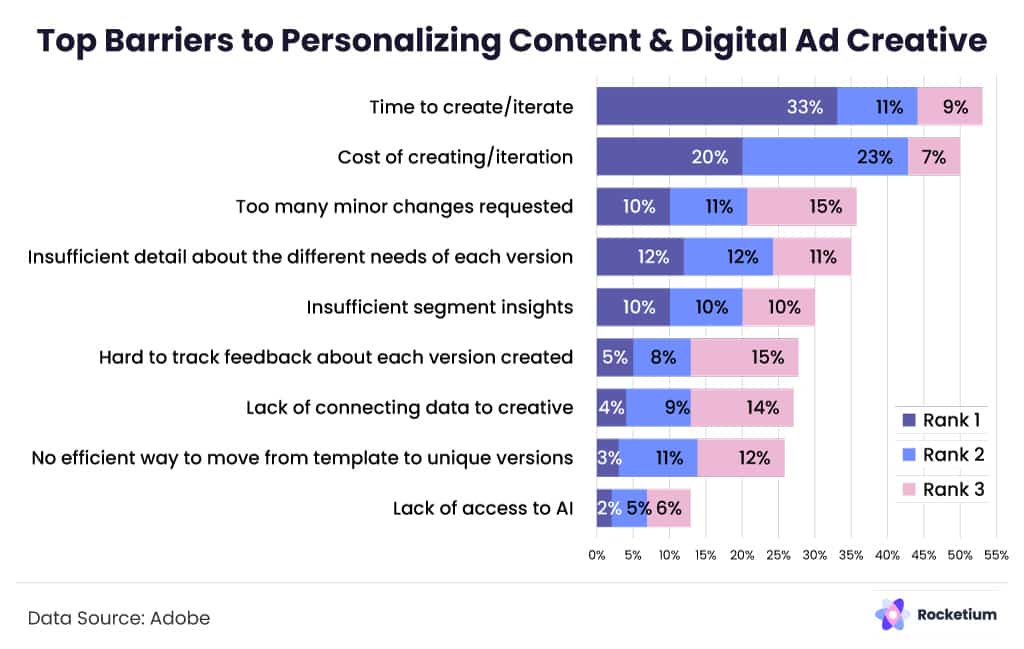
23% of respondents rated the spiraling cost of creative production/iteration as the second biggest challenge they faced. Other contributors included insufficient detail about the different needs of each version, insufficient segment insights, and the lack of connecting data to ad creative, the study says.
Brands know they cannot afford to choose quality over scale anymore. Fortunately, creative automation has evolved to bridge these very gaps, allowing marketers to quickly iterate and scale creative ad campaigns.
From template-based design and bulk-editing to role-based access and feed-based scale, creative automation is the answer to almost all marketing personalization challenges you might face today.
Consumers prefer to buy from the brands they trust. AI-based creative management platforms are helping brands personalize their messaging at scale and create sustainable growth.
Here is a 9 step process you can use to create personalized banner ads and video ads rapidly:
From eCommerce to FinTech, regular creative refresh is a key aspect of creating customer engagement for brands. However, creating personalized banner ads or personalized video ad variations can sometimes be just as time-consuming as making one from scratch.
Campaign performance is inevitably affected if there is no efficient way for brands to move from the base concept to multiple variations. According to the Adobe report, this is one of the top barriers to creating personalized banner and video ads.
The solution: creating custom templates from a creative automation platform.
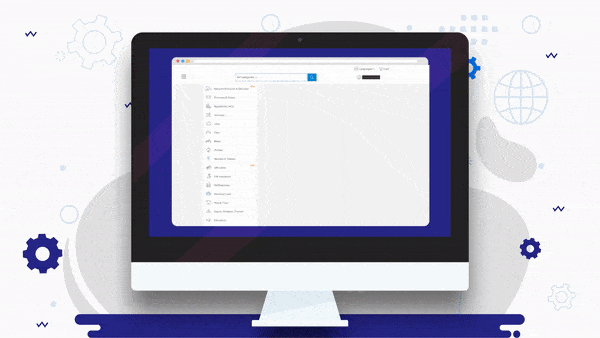
Creating custom templates are the building blocks of automation from which you can scale campaigns rapidly.
With customizable base templates, marketers can finally generate personalized ad variations, based on real time performance data. All they need to do is import cohort-wise personalized data or edit various style and format elements or product data from a spreadsheet. The edits can then be saved as a new template and applied to the entire campaign within seconds.
Let creative automation take care of generating personalized banner and video ad variations, and open the doors for designers to focus on experimenting and coming up with innovative designs for each campaign or for campaign refresh.
The result: a distinct look and feel to every campaign you roll out and more importantly, better engagement and conversion.
Approved creative assets serve as a ready reference for design teams, especially those working out of other offices. Moreover, tagging mistakes do happen and the time lost in searching for files can be high.
When working on multiple campaigns, it is critical that you tag and categorize creatives for easy access.
More importantly, storing all your creatives in a single location can make it easy for your team to review, adapt and manage approved assets, saving time and effort for everyone involved. For example, it can make the task of reusing approved assets much simpler.
Consistency in terms of size and placement across different channels is critical for brand recognition. This means having a laser focus on brand governance. Put a set of tiered controls in place to ensure that only the right people have access to the relevant files.
If you have multiple campaigns active, you can even set up campaign-specific asset libraries with their own permissions and workflows. It can also streamline the process of managing on-staff designers and freelancers.
As brands diversify to more digital channels, design teams are spending more time than ever on iterating existing designs instead of creating new ones. Brands often divert a lot of resources for marketing personalization so as to keep the messaging relevant to different cohorts while meeting specific platform guidelines (ad networks, social media, etc.)
However, this process of iteration inevitably affects the turnaround time which in turn impacts production costs.
Moreover, the lack of connecting data from diverse sources – website analytics and demographic information, for example – to the creative process also gets in the way of creating true marketing personalization. The solution: feed-based scale.
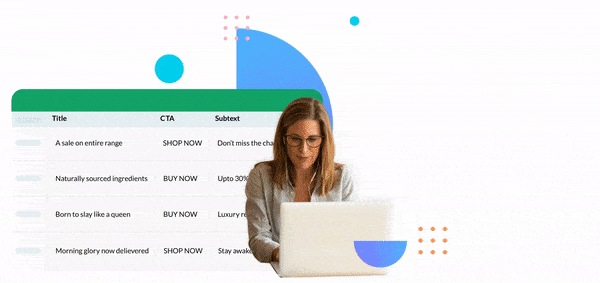
This feature, available in the latest creative management platforms, allows you to plug product details directly from a spreadsheet and create personalized ad variations for multiple campaigns and cohorts within seconds.
It allows marketers to quickly close any performance gaps by rolling out offers in real-time based on consumer behavior.
Imagine being able to change image backgrounds, edit ad copies or reformat entire campaigns at a fraction of the time and cost. With creative automation, you will not need to spend half as much on augmenting capacity through external creative agencies or by hiring freelancers.
Last-minute deals and offers are a tried and tested tactic to drive sales during high-stakes festive ad campaigns. Marketers will usually double down on personalized banner ads and personalized video ads to build urgency across channels.
For designers though, this translates into too many minor changes in terms of style, size, and text. According to the Adobe report, this constitutes one of the third biggest challenges in creating personalized banner ads and personalized video ads.
However, there’s a solution. Creative automation tools can do the thankless job of cropping, masking, and resizing a cinch. It is a win-win for marketers as they can now test offers and CTAs rapidly while designers can get away with making incremental edits in batches.
A clear, well-conceived creative brief is at the heart of successful marketing personalization. After all, it impacts everything from delivery timelines to ROI.
In the Adobe survey, a combined 22% of respondents ranked insufficient segment insights and lack of details regarding the different needs of each version as being a top barrier for smooth creative production – both key parts of any creative brief. To sum up, designers need a coherent project context.
Very often though, this is done on a Google Docs file which the designers have to refer to every time. The clarifications to designers’ questions are also often fragmented and lack context. They are given over the phone or, in many cases, via terse text messages or comments on the Docs file. The result: a ton of friction in switching between platforms (Google Docs, emails – that typically contain the creative brief, and design platforms) that inhibits the team’s creative flow.
A Creative management platform overcomes this problem by bringing the creative brief into a common workspace, where designers can design and refer to the creative brief in a single platform.
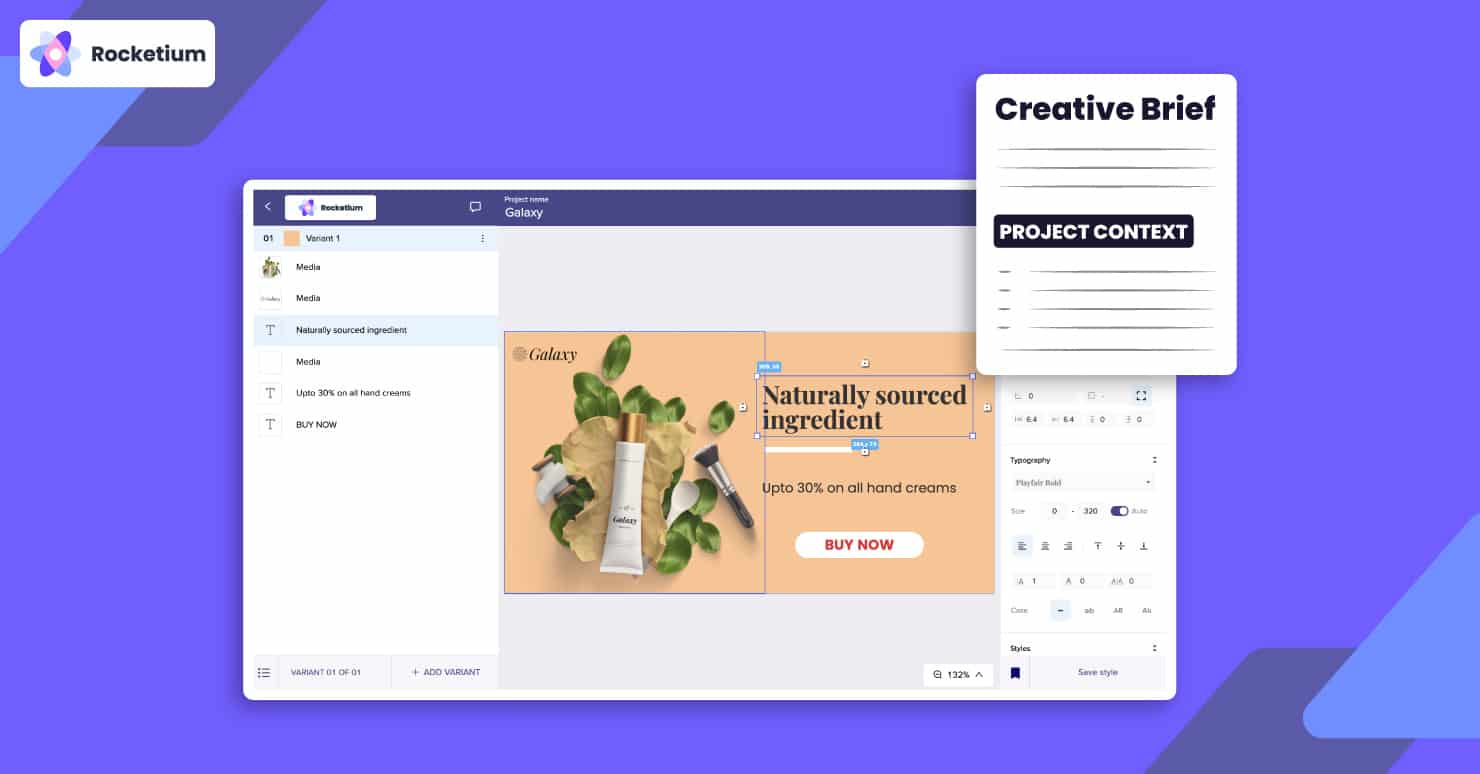
Here’s what that means: no toggling to those overflowing inboxes every now and then and absolutely no second-guessing! What better way to boost team collaboration, eh?
Personalization inherently means creating a lot of variations. Most creative teams have an elaborate review process for the campaign manager and other stakeholders to share feedback with designers and vice-versa.
However, email is the most common channel used for sharing feedback. The longer an email chain gets, the greater the chances of the feedback being misinterpreted.
Often, designers find it hard to associate the feedback with the exact version it relates to. This often leads to follow-ups and avoidable delays. In fact, tracking feedback was rated 6th among the top 9 challenges to marketing personalization faced by creative teams.
A Creative Management Platform allows reviewers to leave comments directly on the design itself which makes it easy for the designer to relate to.
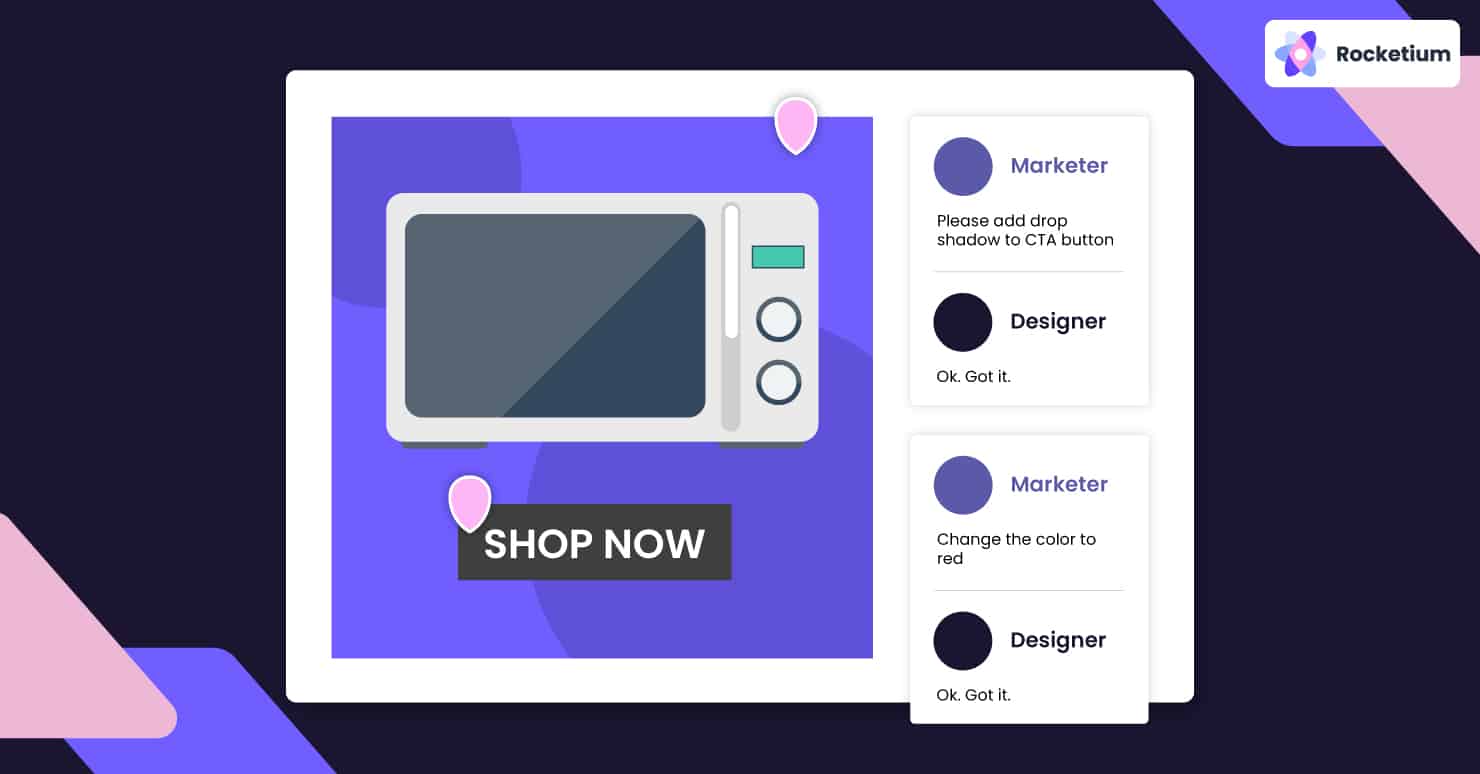
It makes email or text messages redundant and allows for maximum clarity. The result: faster iterations and go-live.
Also, since the comments are archived, the designer can refer back to them for guidance at any time.
Manually adapting banners and videos for specific size requirements is time-consuming and prone to errors. It can also put brand reputation at risk. AI-based creative automation allows teams to resize ad content automatically with the click of a button.
The result: seamless user experience across channels.
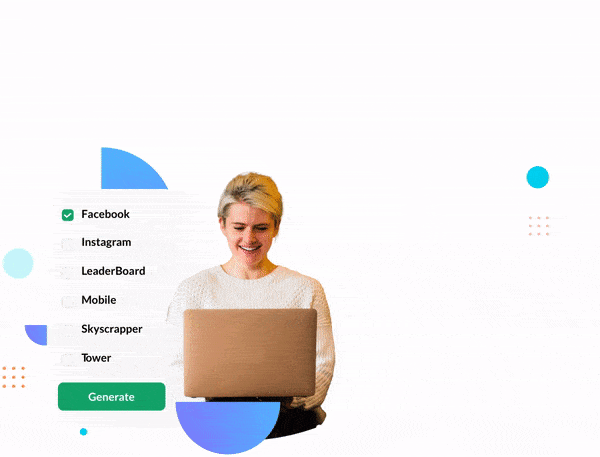
A/B testing different combinations of imagery and text before go-live can bring rich rewards in terms of ROI. It is the key to driving personalization in digital marketing. However, copywriters may not always have the bandwidth to create multiple ad copies – until now that is.
AI-enabled copywriting tools are now available which can deliver contextual ad copies customized to specific user needs, based on just a few tags and keywords.
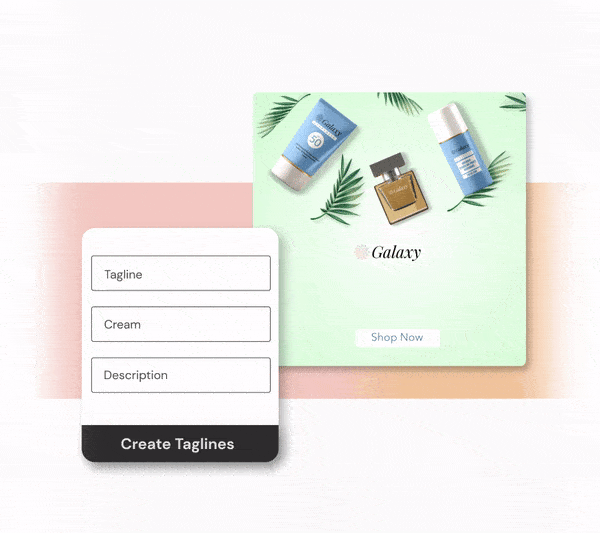
Given the rising cost of customer acquisition, brands around the world are leveraging AI-enabled creative automation to push personalized messages across channels. The increasing adoption of automation solutions is proof that it works. Here are a few leading examples:
As the first deposit-free car rental service in the MENA region, Invygo wanted to serve personalized Facebook video ads for a large number of cohorts. This naturally entailed a high refresh rate which in turn pushed up production costs.
However, creative automation allowed the brand to scale video production by simply feeding offers and product details. Invygo has also leveraged video templates successfully to create personalized variations rapidly.
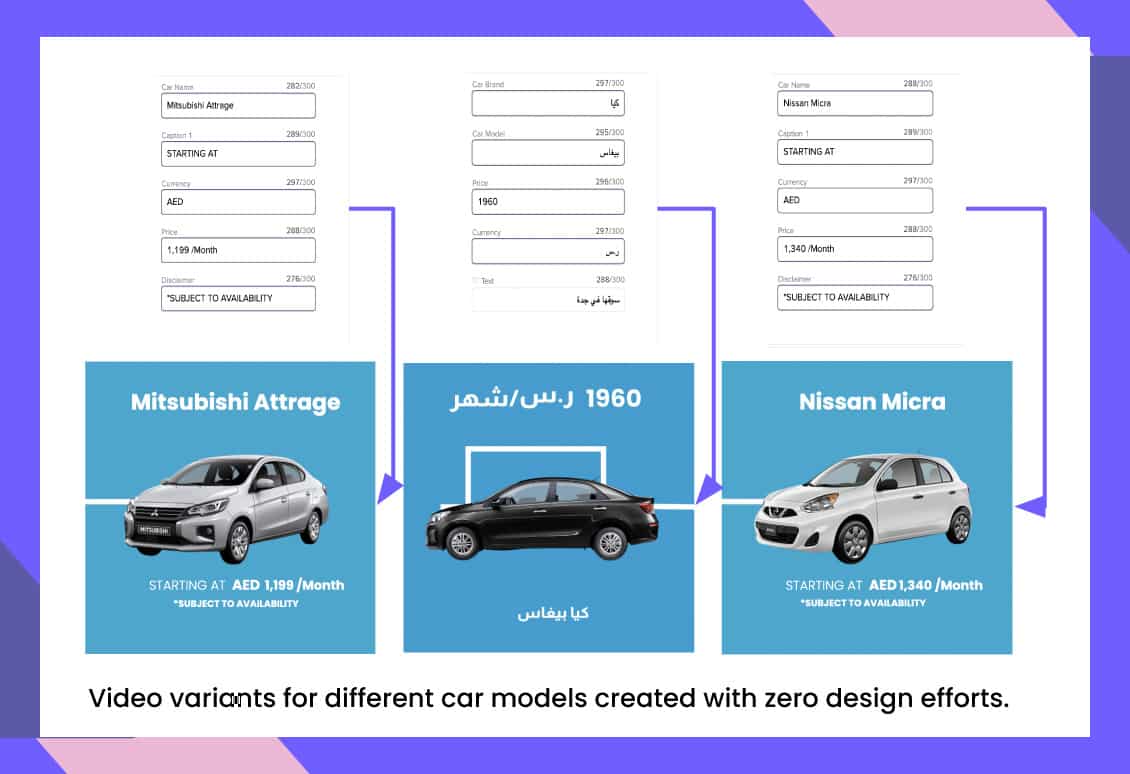
The result: a drastic reduction in the average cost of production for personalized video ads by around 80%.
EdTech brand, LEAD, works with schools across more than 20 states in India to boost admission rates and provide quality educational content. The company relied on location-based targeting and Facebook personalized ads to drive customer acquisition.
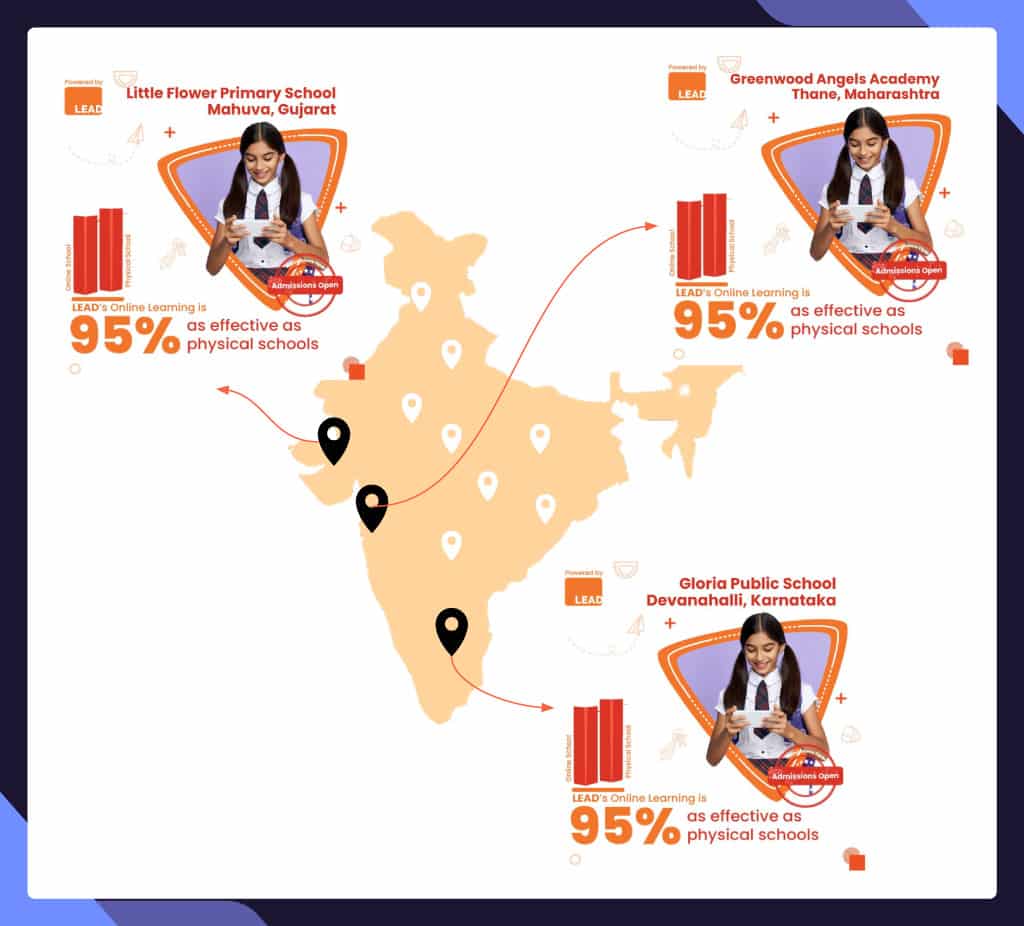
However, the volume and cost of creative production were a challenge.
LEAD’s gambit of using creative automation to scale its campaigns paid off tremendously. It allowed the small in-house team to leverage templates, data-feeds, and direct publishing to push brand-compliant, personalized banner ads and personalized video ads at 5X the original speed and 20% of the original cost.
Digital accounting app OKCredit serves small and medium businesses across India. Its acquisition strategy was centered on increasing app installs via personalized Google ad campaigns. However, creating and A/B testing hundreds of multilingual banners for various channels was a major challenge.
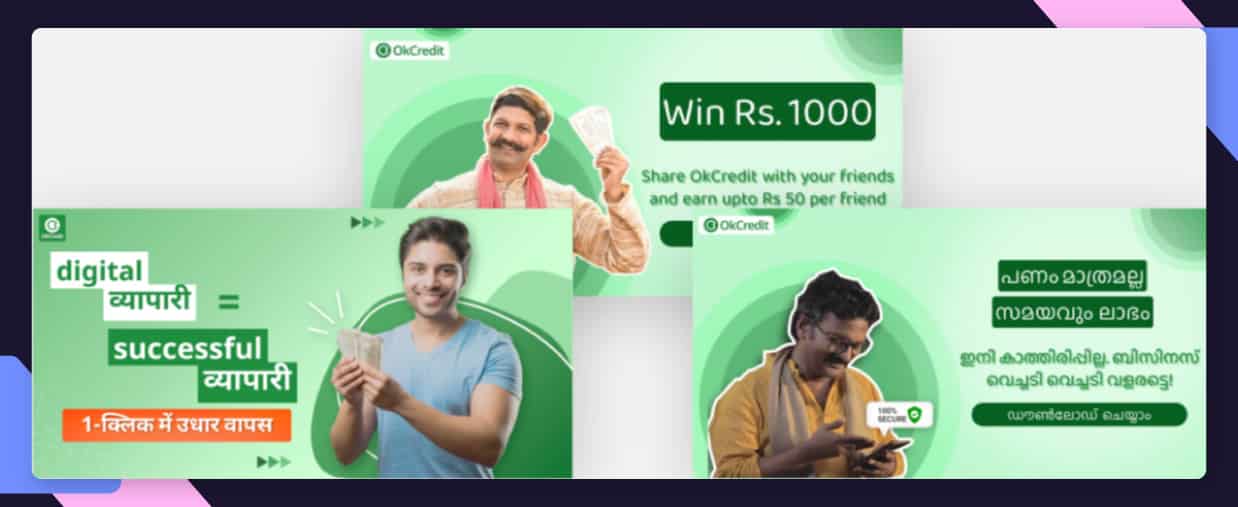
OKCredit realized that the only cost-effective way to achieve marketing personalization at scale was creative automation. The team started using templates and data feeds to apply style and content changes across their personalized banner ads campaigns in seconds. The results were incredible. OKCredit managed to reduce turnaround time by 5X, enabling it to produce 3X more campaigns than before.
Regardless of whether they prefer personalized banner ads or personalized video ads, brands need to keep up with changing customer behavior to drive sales and retention. This means marketers and designers must get their priorities right in terms of quality and volume.
It can no longer be an either-or situation; both deserve equal attention. With creative automation, you can compress the time and cost of producing personalized banner and video content at scale. Be a part of the #designledgrowth revolution!
Rocketium is a complete creative management platform designed to support growth marketers in delivering personalized ad creative at scale. It is designed to automate creative workflows, and streamline asset management.
Moreover, Rocketium allows marketing and design teams to build their own custom integrations, enhancing collaboration and brand management. Rocketium is a partner of choice for leading brands like Urban Company, Cult.Fit, Meesho, and Khatabook.